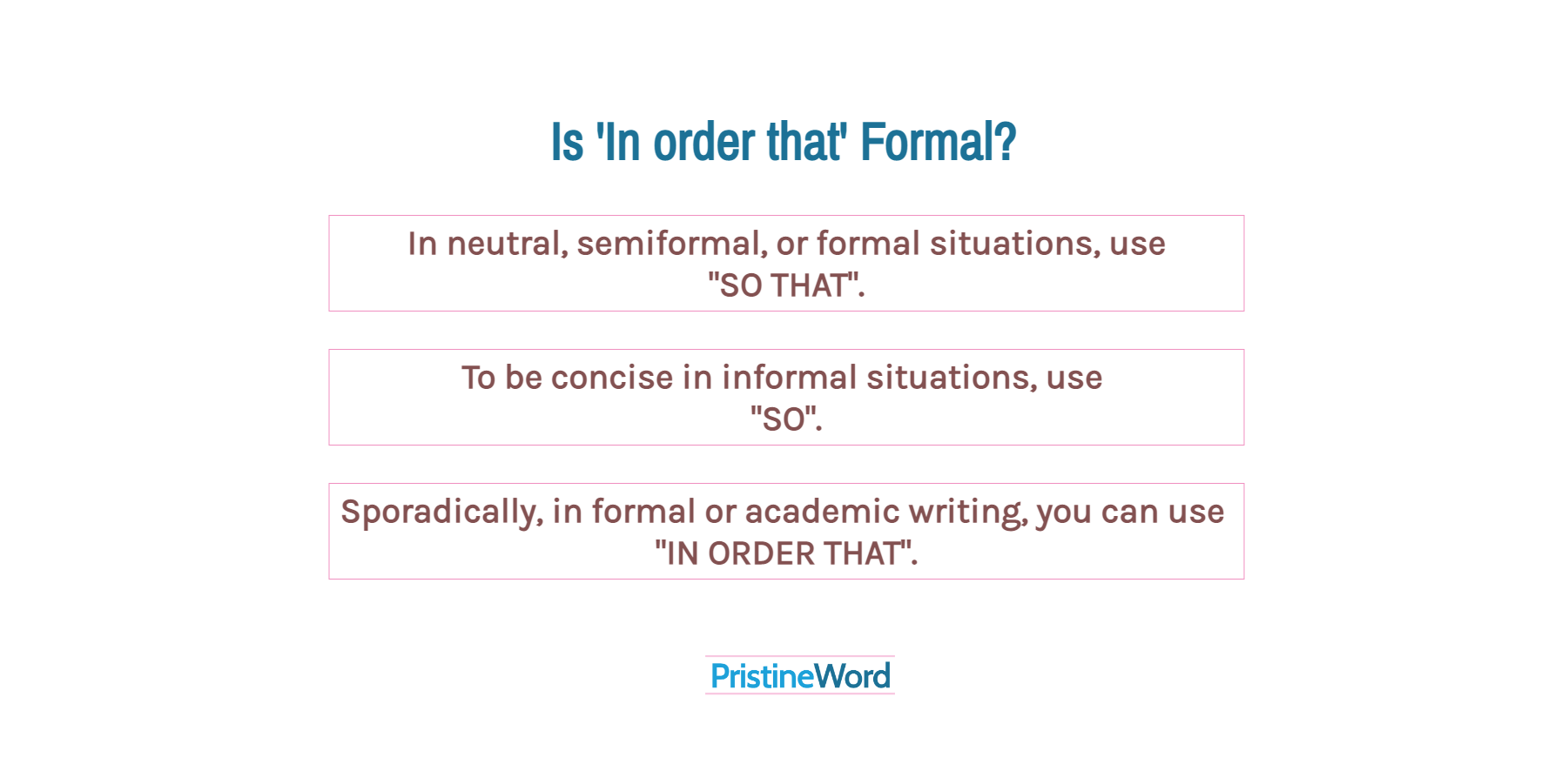"In order that" is a subordinating conjunction that can be introduced to express purpose. You can use it in very formal English or academic writing.
"In order that" is a subordinating conjunction that can be introduced to express purpose. You can use it in very formal English or academic writing.
The variable is minimized in order that the system can reach the equilibrium point.
Don't use "in order that" in informal situations.
My sister went back home in order that she could enjoy a hot shower.
You can replace "in order that" by "so that". "So that" is slightly less formal and more common than "in order that".
Alice should develop her talent (in order that/so that) she can share it with others.
In everyday English or colloquial language, some speakers omit "that" from the "so that" construction.
My sister went back home so she could enjoy a hot shower.
In neutral, semiformal, or formal situations, use "so that". More infrequently, in very formal or academic contexts, you can use "in order that".
You can start a sentence with "in order that". When using this conjunction in the front position, add a comma after the clause introduced by "in order that".
In order that the system can be used to achieve those goals efficiently, it is essential to identify the different levels of abstraction.
When using "in order that", be aware that this compound conjunction must be followed by a clause, and therefore by a subject and a verb.
In order that the environment can be preserved, the recommendations will be reinforced.
Note that "in order that" is usually followed by a modal verb, such as "would", "will", "can", "could", "must", etc.

